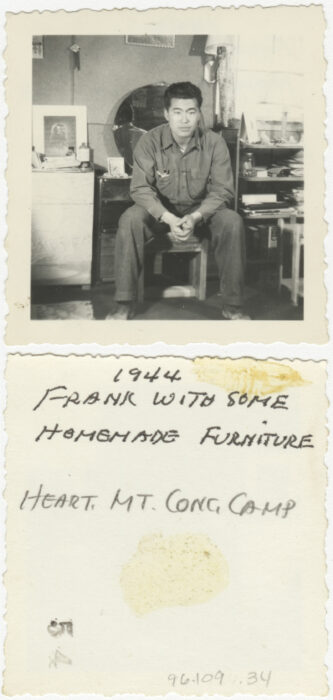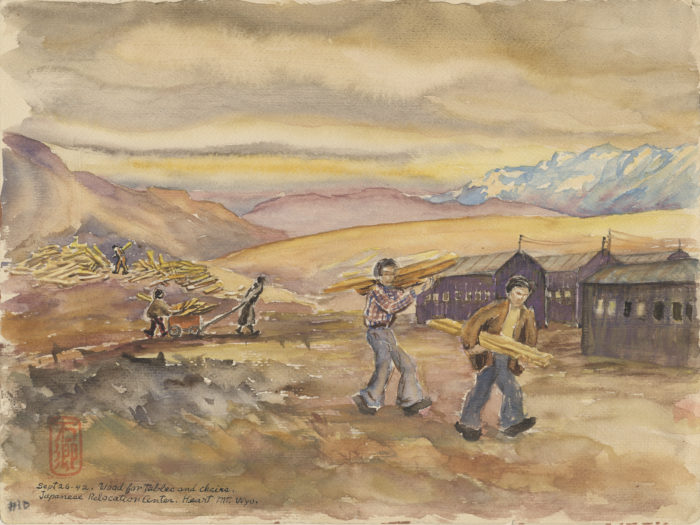Dignity1

Japanese American National Museum, Gift of Frank S. Emi (2003.294.1)
Click to open full-size image in new tab.- What is this a picture of?
- What is it made out of?
- Does it look handmade or store-bought?
- What tells you that?
Read this quotation by Frank S. Emi, the maker of the chest of drawers.
- What does this quotation tell you about Mr. Emi?
- What does it tell you about the conditions at Heart Mountain?
- What does it tell you about the resources available to those incarcerated at Heart Mountain?

Japanese American National Museum, Gift of Frank S. Emi (96.109.34)
Click to open full-size image in new tab.This is a photograph of Mr. Emi with the vanity he described as his “pride and joy.” The back of the photograph indicates the furniture pictured was made at Heart Mountain concentration camp.
- How would you describe his expression?
- What else do you see in this photograph?
- Without the inscription on the back, would you know where this photograph was taken?

Estelle Ishigo, Untitled (Sept 26-42. Wood for tables and chairs. Japanese Relocation Center. Heart Mt., Wyo.), 1942, watercolor on paper, Japanese American National Museum (94.195.30)
Click to open full-size image in new tab.- What do you see in this image?
- Where was this image painted?
- What are the people doing?
- What evidence can you find that tells you what is happening in this painting?
This is a watercolor painting by a Caucasian woman named Estelle Ishigo. Estelle lived at Heart Mountain along with her husband, Arthur. While there, she drew and painted many of her experiences, giving us a view into daily life at the camp.
Japanese American families were removed from their homes and permitted to bring only what they could carry. Despite this, there were some intangible things that could not be taken away from the Japanese Americans.
- Which ones are depicted in this painting?

Japanese American National Museum, Gift of Frank S. Emi (2003.294.1)
Click to open full-size image in new tab.This simple chest of drawers tells so much about its maker and the conditions under which it was made. When individuals were taken from their homes, they were told they could bring only what they could carry, and this meant they could not take any large furnishings. Upon arriving at the barracks—their new, hastily-constructed homes—the families found that the spaces were small, uncomfortable, impersonal, and unfurnished.
Under these conditions, individuals began to settle in and rebuild the comforts of home inside the concentration camps using the materials available to them. This sense of perseverance and craftsmanship reflects the Japanese Americans’ dignity and desire to make the best life for themselves, their families, and their community even in these conditions of unjust imprisonment.

